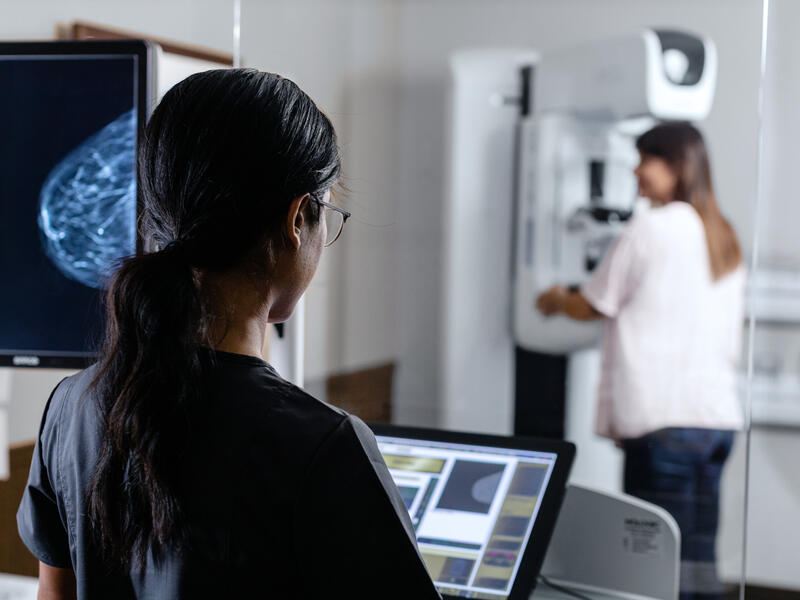From feeling a lump in the shower to high-definition images from advanced technology, there are several ways to detect breast cancer. What are your screening options and which method is best for you?
Explore these five screening options and learn how to choose the right one for your breast health.
1. Breast awareness
Your breasts will change in appearance and shape as you age. This is normal. But some changes may be warning signs of something more serious.
Keep an eye out for:
- Lumps and bumps
- Nipple discharge, especially bloody discharge
- Shape or size changes
- Changes in the skin on the breast, including redness, dimpling or thickening
- Swollen lymph nodes
- Pain or swelling
Breast awareness is different from breast self-exams. Self-exams were once a common recommendation. However, large studies have failed to show health benefits for women who do monthly breast self-exams.
Instead, most breast cancers are diagnosed because women feel lumps during regular activities. Being aware of what your breasts usually look and feel like will help you notice if something changes.
Tell your health care provider about any changes in your breasts.
2. Clinical breast exam
A clinical breast exam is a physical exam performed by a health care provider. These exams can be offered as part of your annual checkup.
Your provider will examine your breasts, underarms and the surrounding areas. They’ll carefully feel for any abnormalities such as lumps. Your provider will also visually check for other breast cancer symptoms, including changes in skin appearance and breast size and shape.
Women ages 25 to 39 years old who are at average breast cancer risk should get a clinical breast exam every one-to-three years. Women ages 40 and older should receive a clinical breast exam every year along with their annual mammogram.
Talk to your provider about how often you should get a clinical breast exam based on your risk.
3. Mammogram
A mammogram is a low-dose X-ray of the breast. This is the most commonly recommended screening test for women.
Most mammograms at Sanford Health use 3D technology, called breast tomosynthesis. 3D mammograms compile multiple images of the breast to pinpoint the size, shape and location of abnormalities.
Who should get a mammogram?
- Sanford Health recommends women start getting yearly mammograms at age 40.
- Your doctor may recommend screening earlier depending on your personal risk.
- Regular mammograms should continue for as long as you are in good health.
4. Breast MRI
A breast MRI is generally only recommended for high-risk women. A woman is considered high risk if she has a 20% or higher risk of developing breast cancer in her lifetime. This screening option is also sometimes recommended for women with very dense breast tissue.
A breast MRI should not be used in place of an annual mammogram screening. If your provider recommends a breast MRI, you’ll complete this screening while also getting annual mammograms and clinical breast exams every six to 12 months.
5. Whole breast ultrasound or automated breast ultrasound system (ABUS)
Breast ultrasounds are not usually a routine breast cancer screening. This option is typically only recommended for people who can’t complete an MRI or have certain syndromes such as Li-Fraumeni.
Whole breast ultrasounds are available at the Edith Sanford Breast Center in Sioux Falls, South Dakota.
When you should see a doctor for a breast concern
Contact your primary care provider anytime you notice something different about your breast. This is why all women should practice breast awareness.
Make an appointment if you notice anything that concerns you. Talk to your doctor about your family history, any concerns and the best screening options for you.
Learn more about breast cancer prevention, screening, diagnostics, treatment, survivorship and research from the Edith Sanford Breast Center.
Learn more
- Innovations podcast: Genetics transform breast cancer screenings
- Screening catches breast cancer early
- Mammography: Answers to common questions
…
Posted In Cancer, Healthy Living, Imaging, Women's
